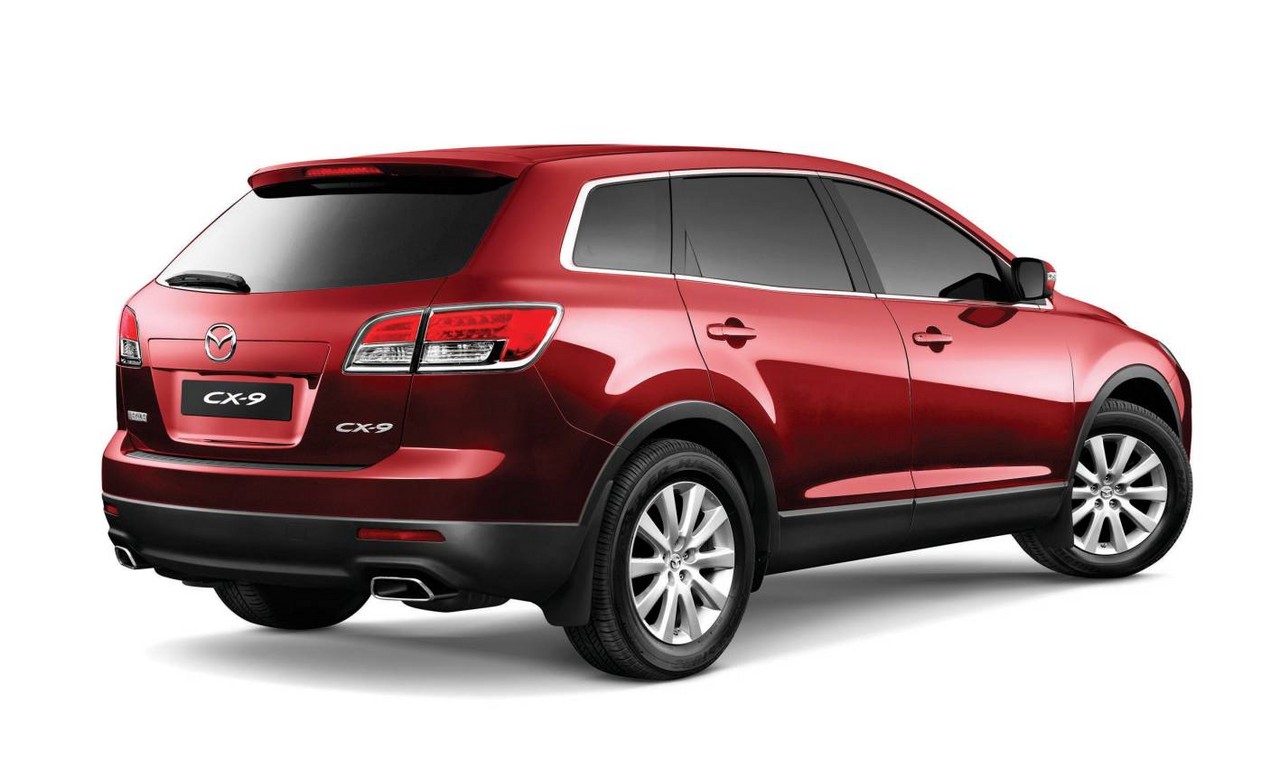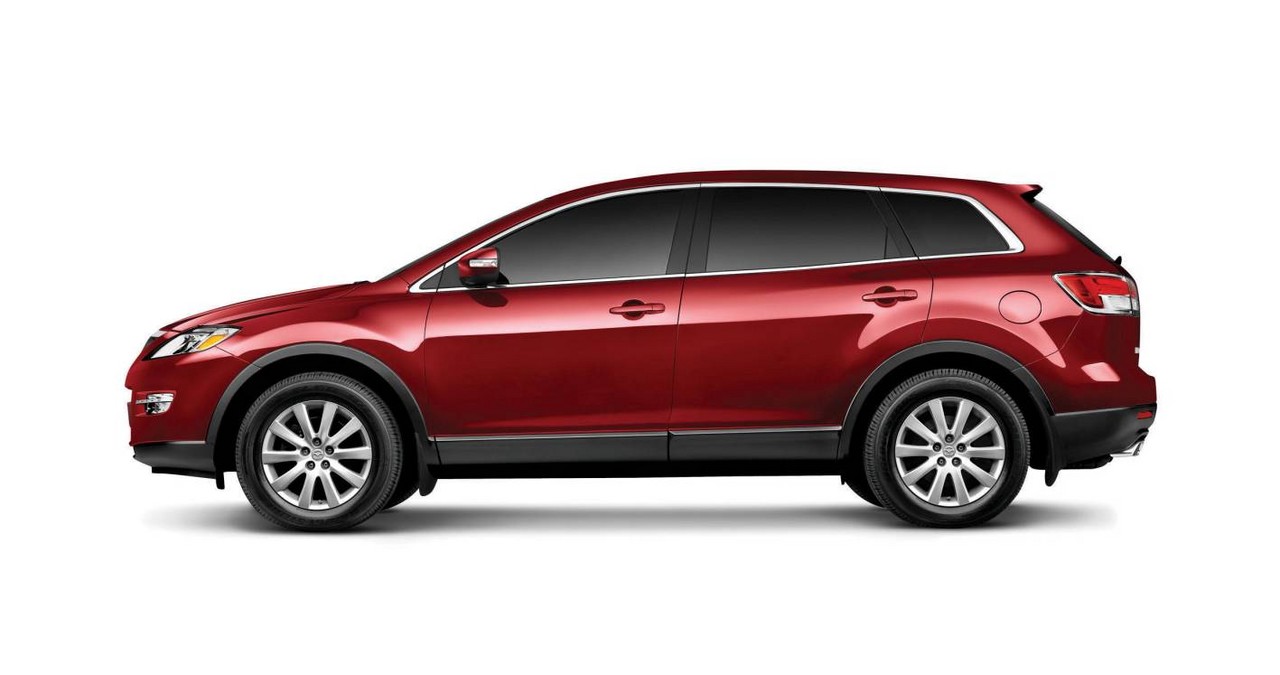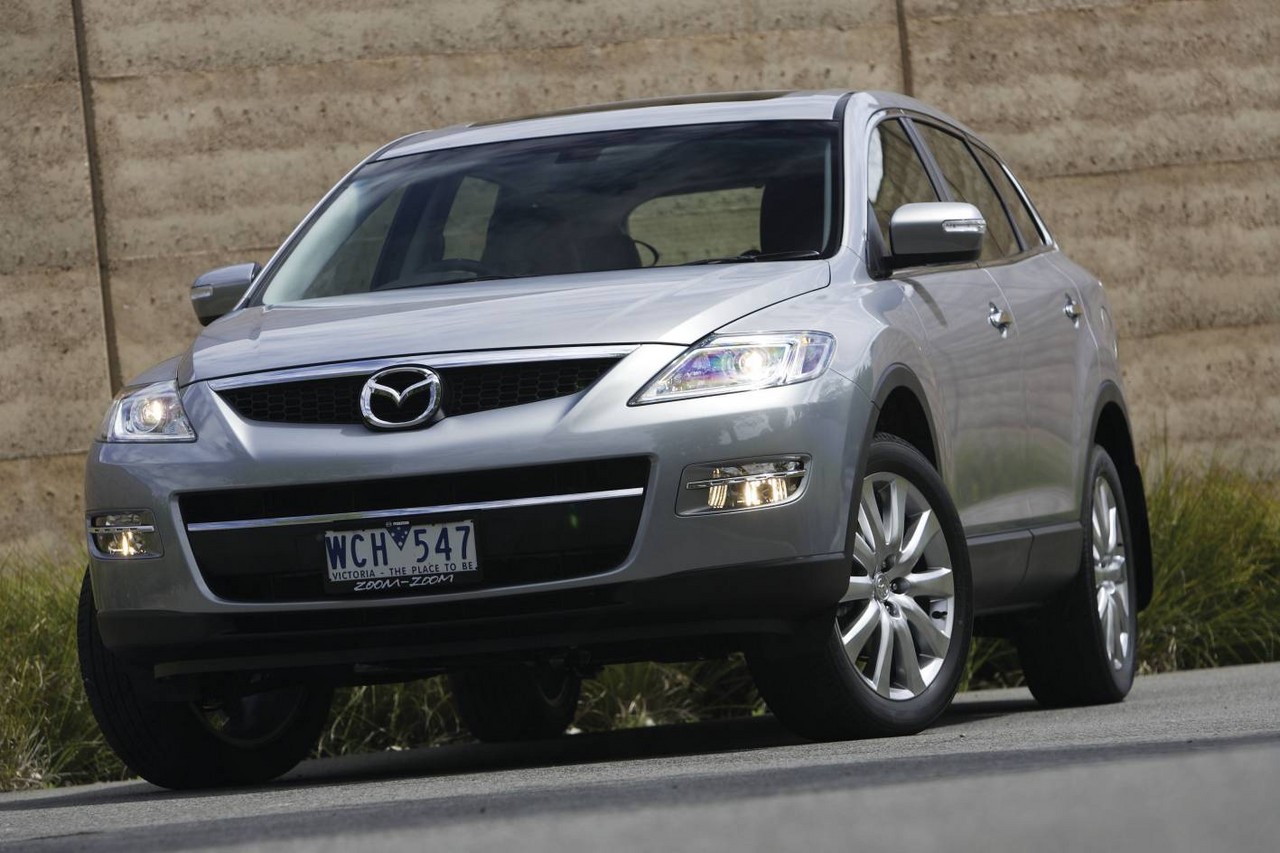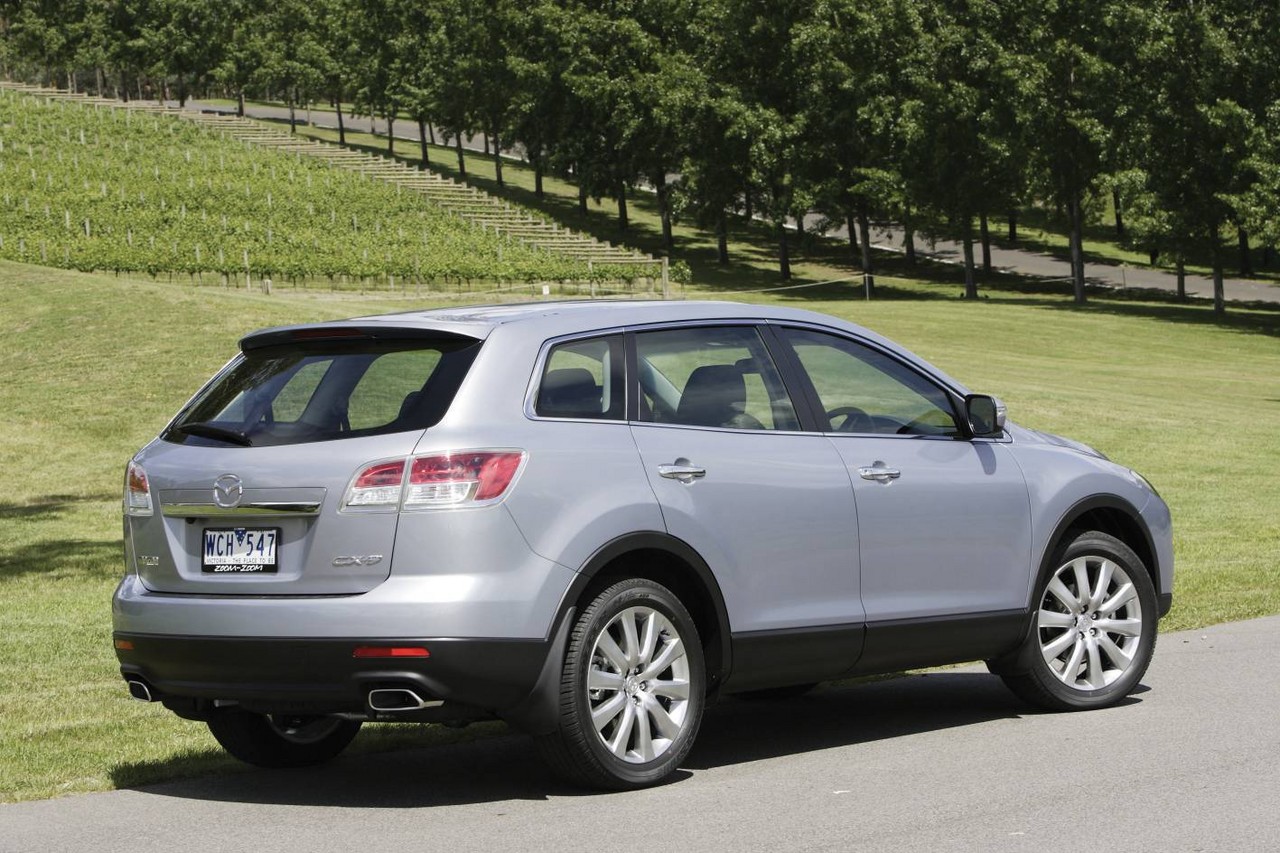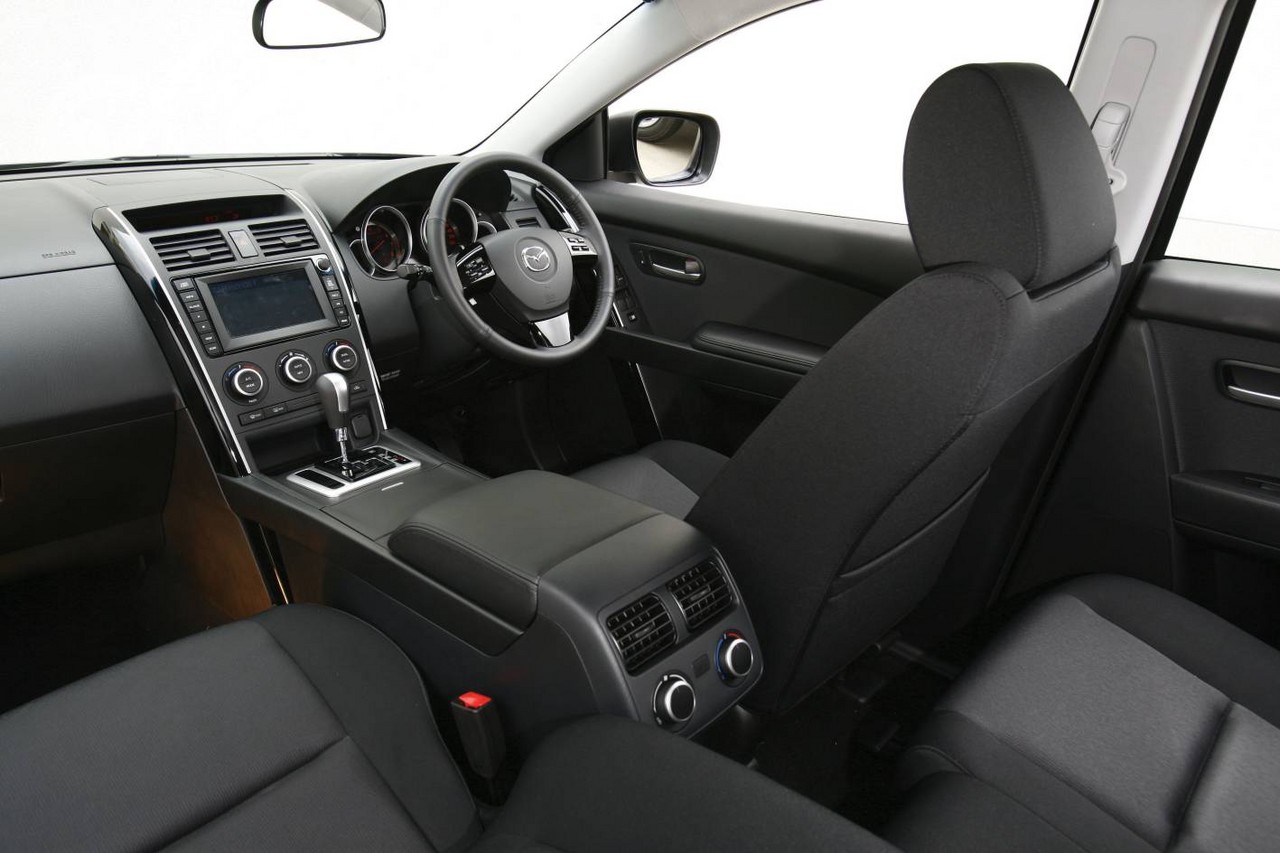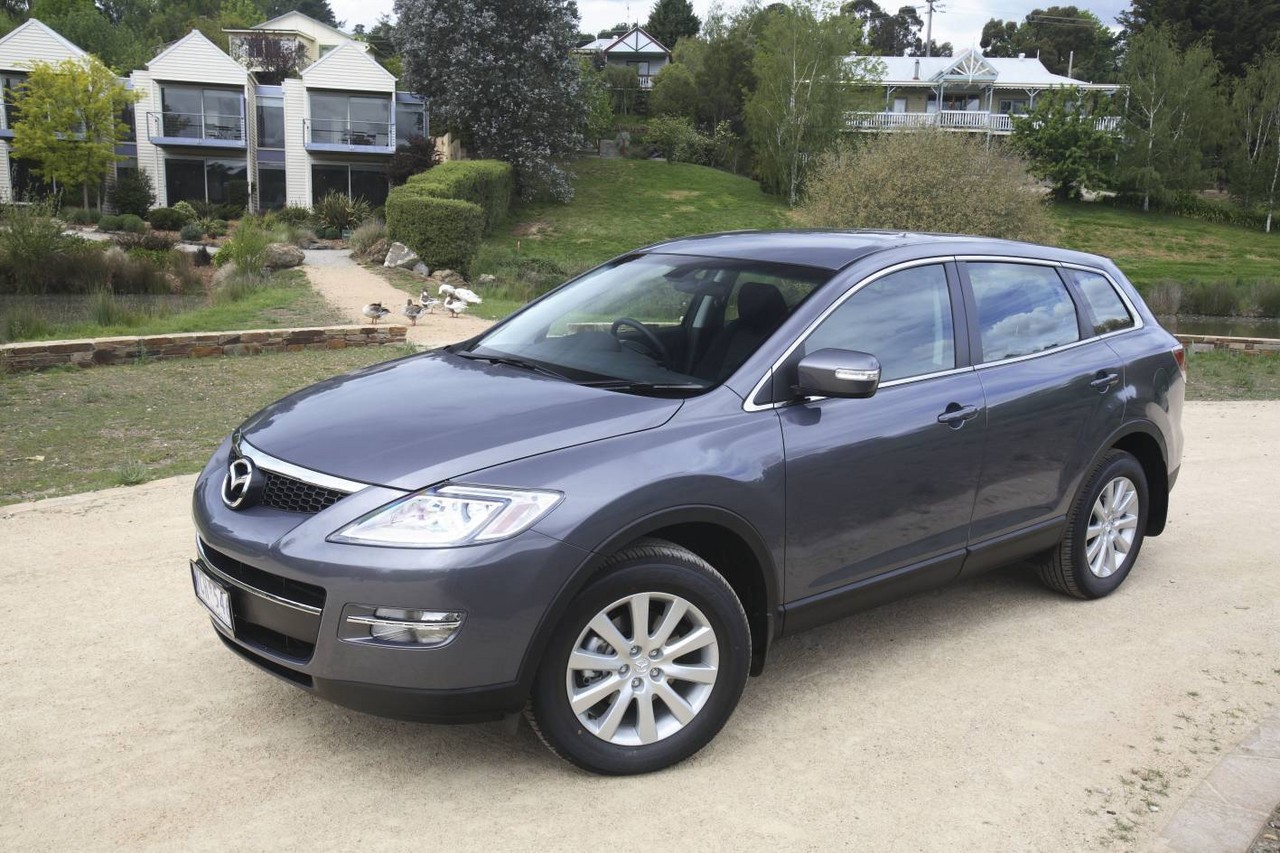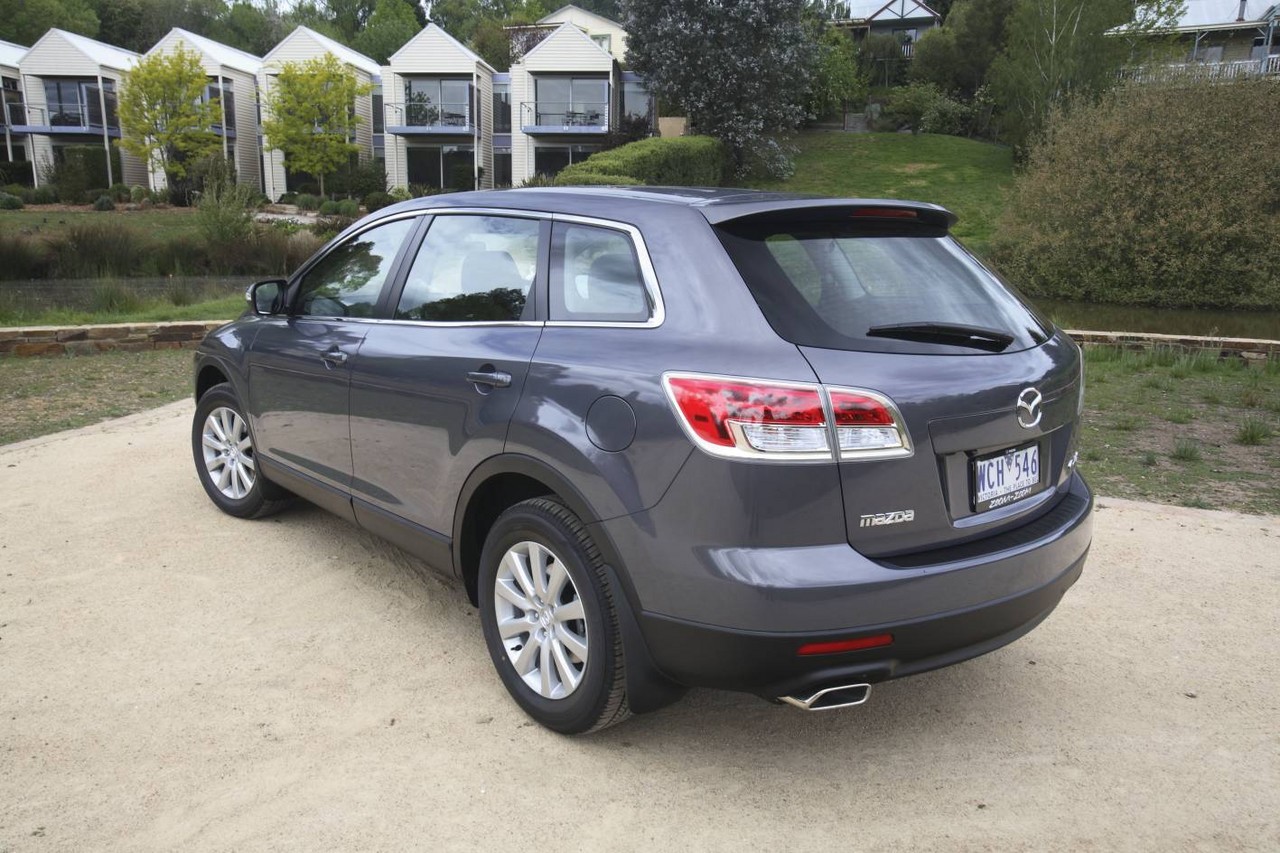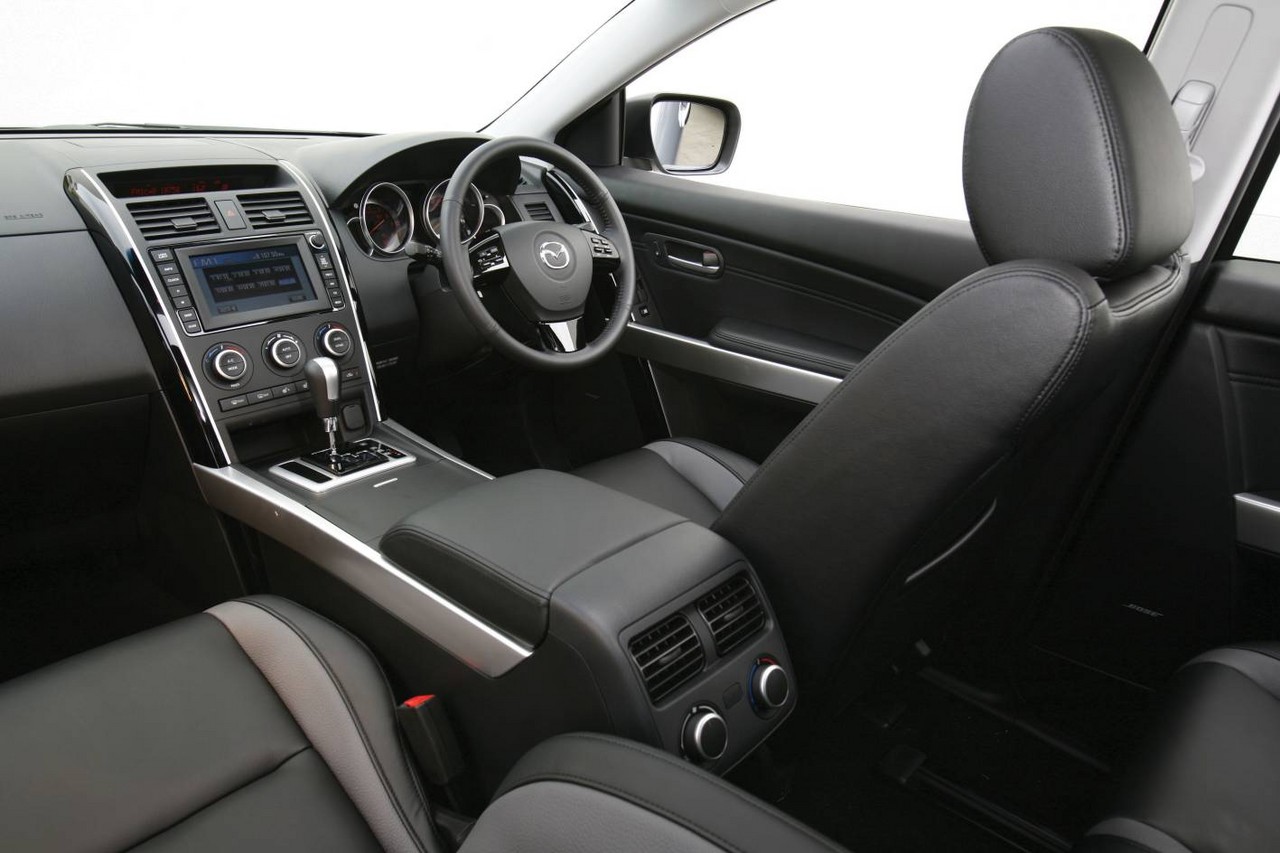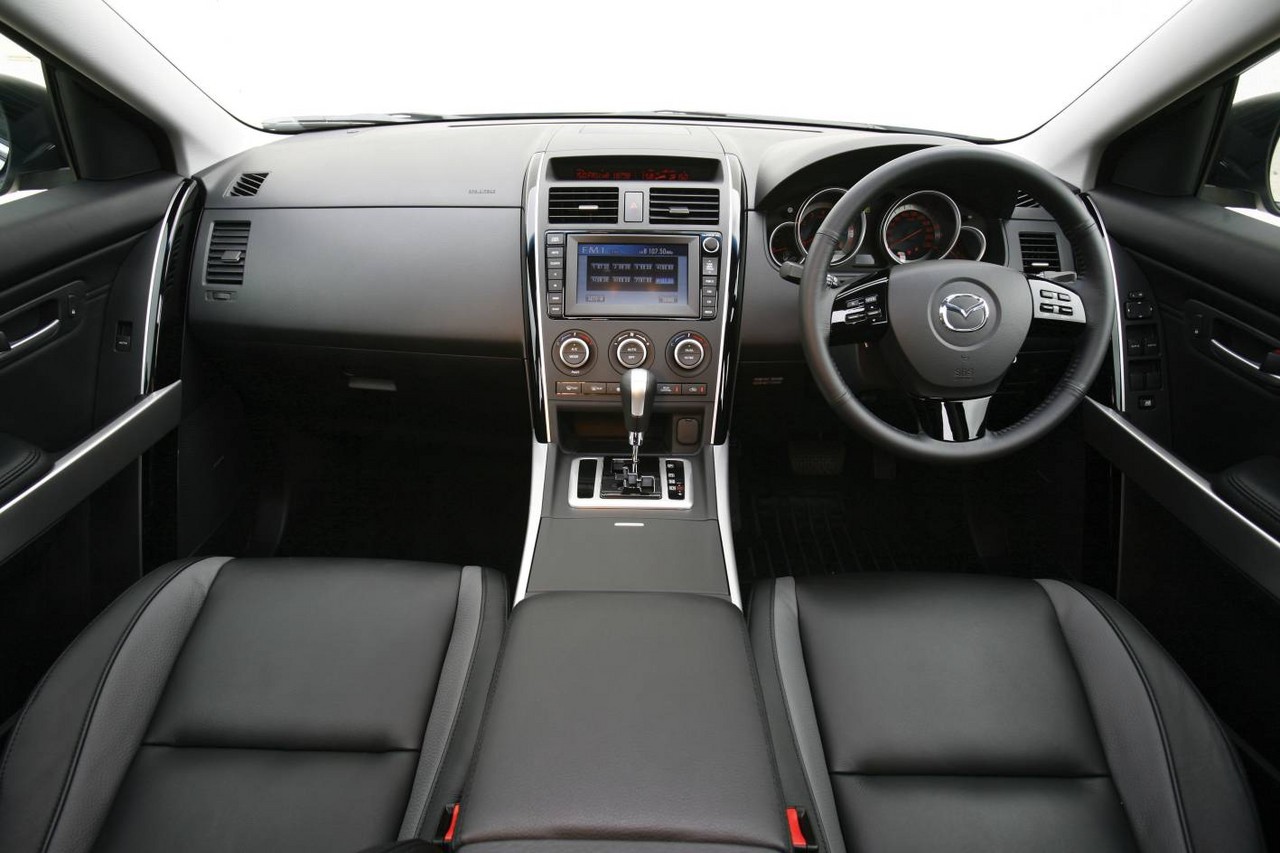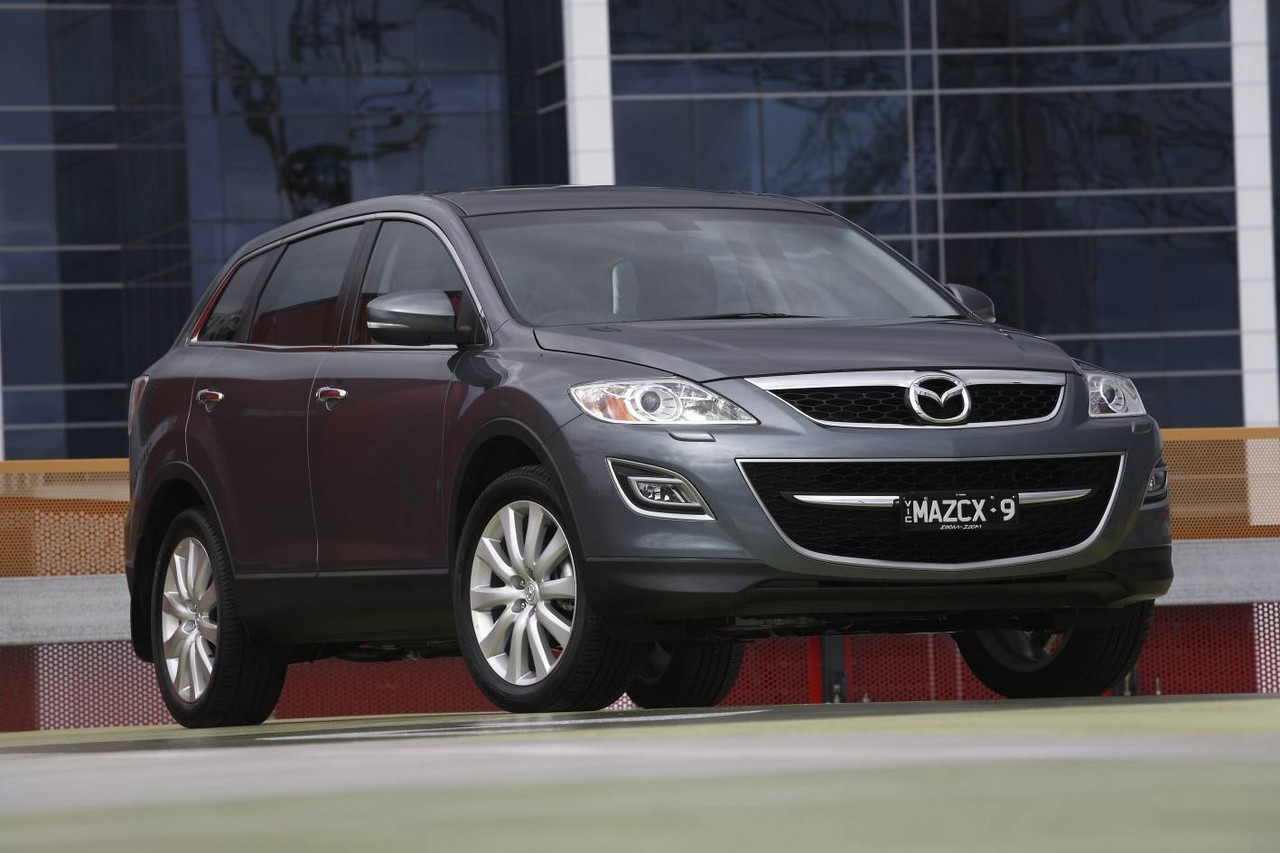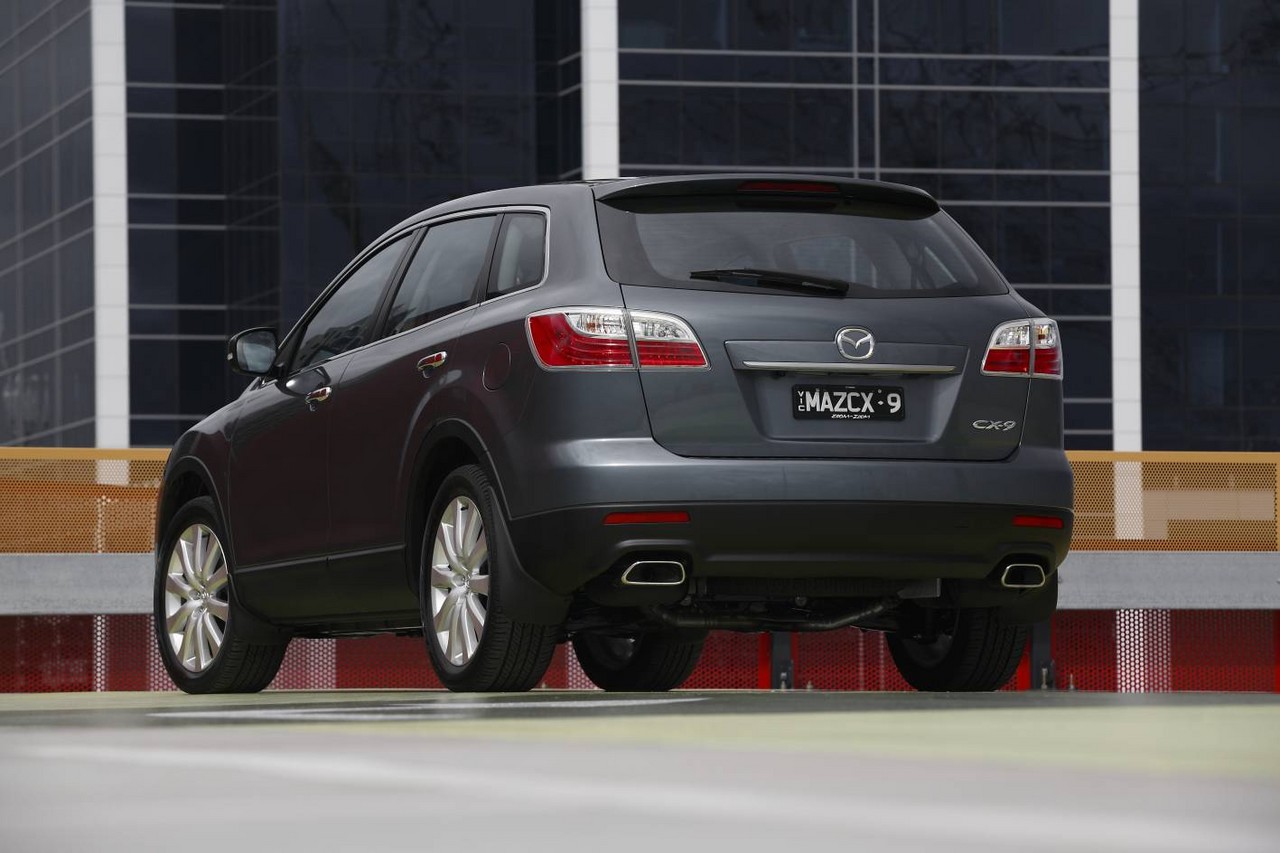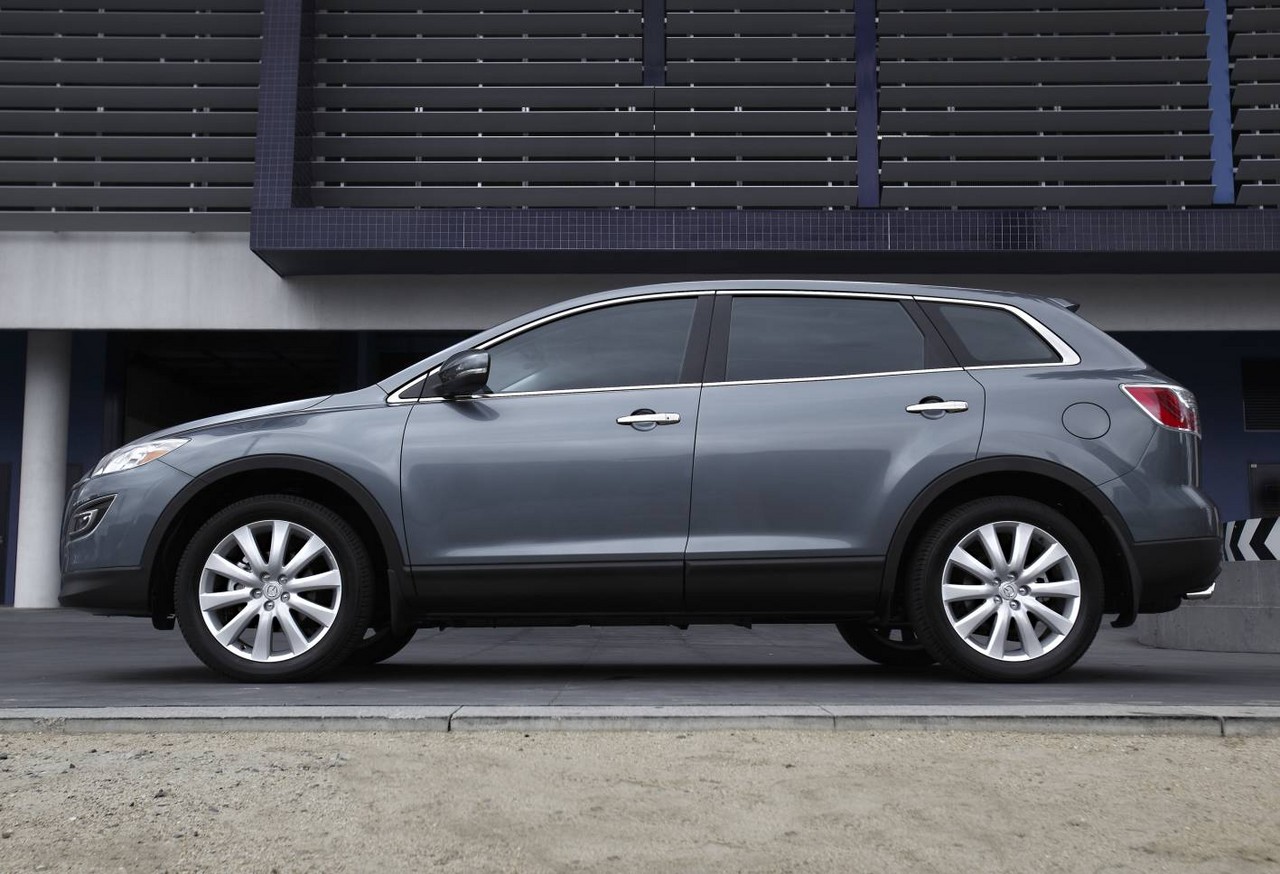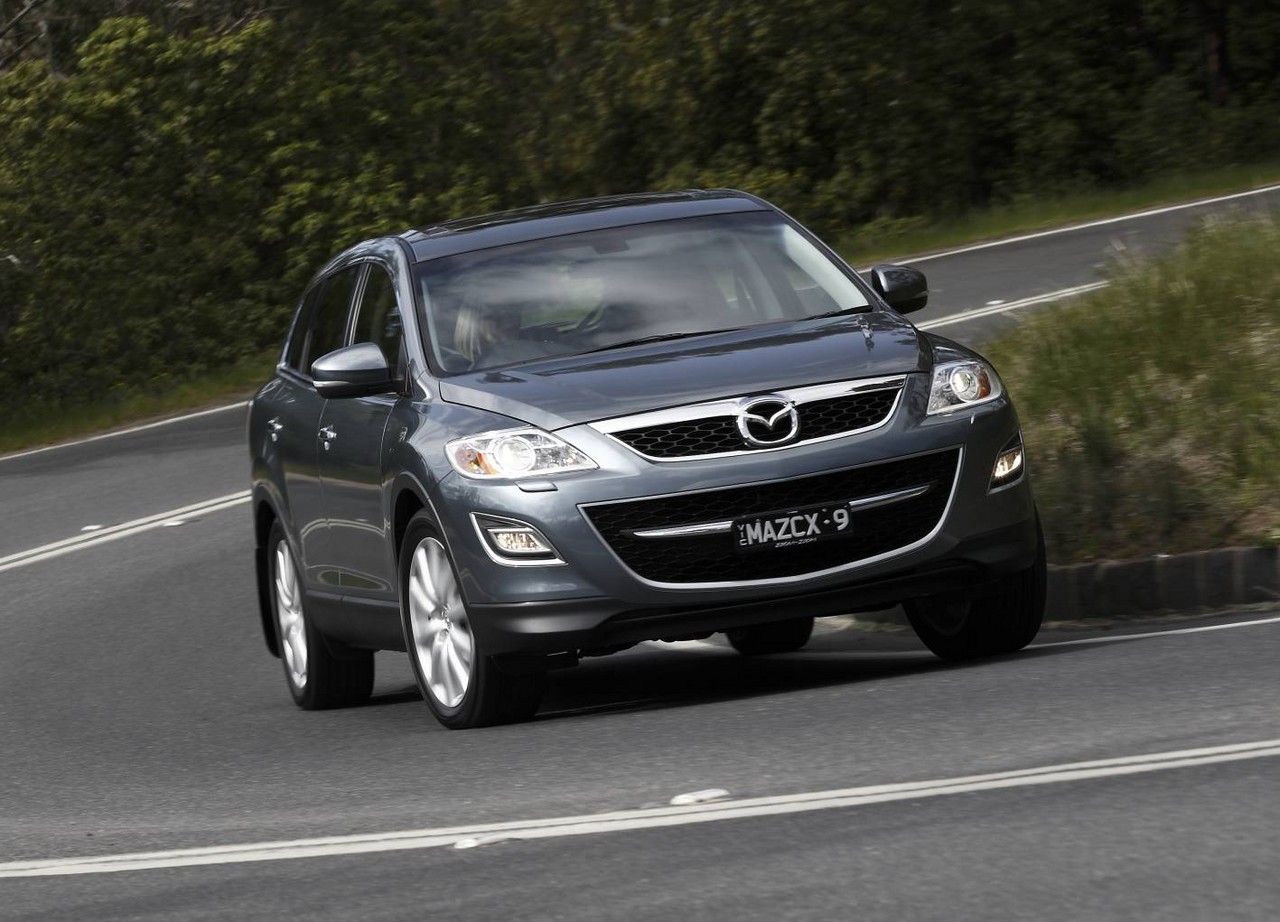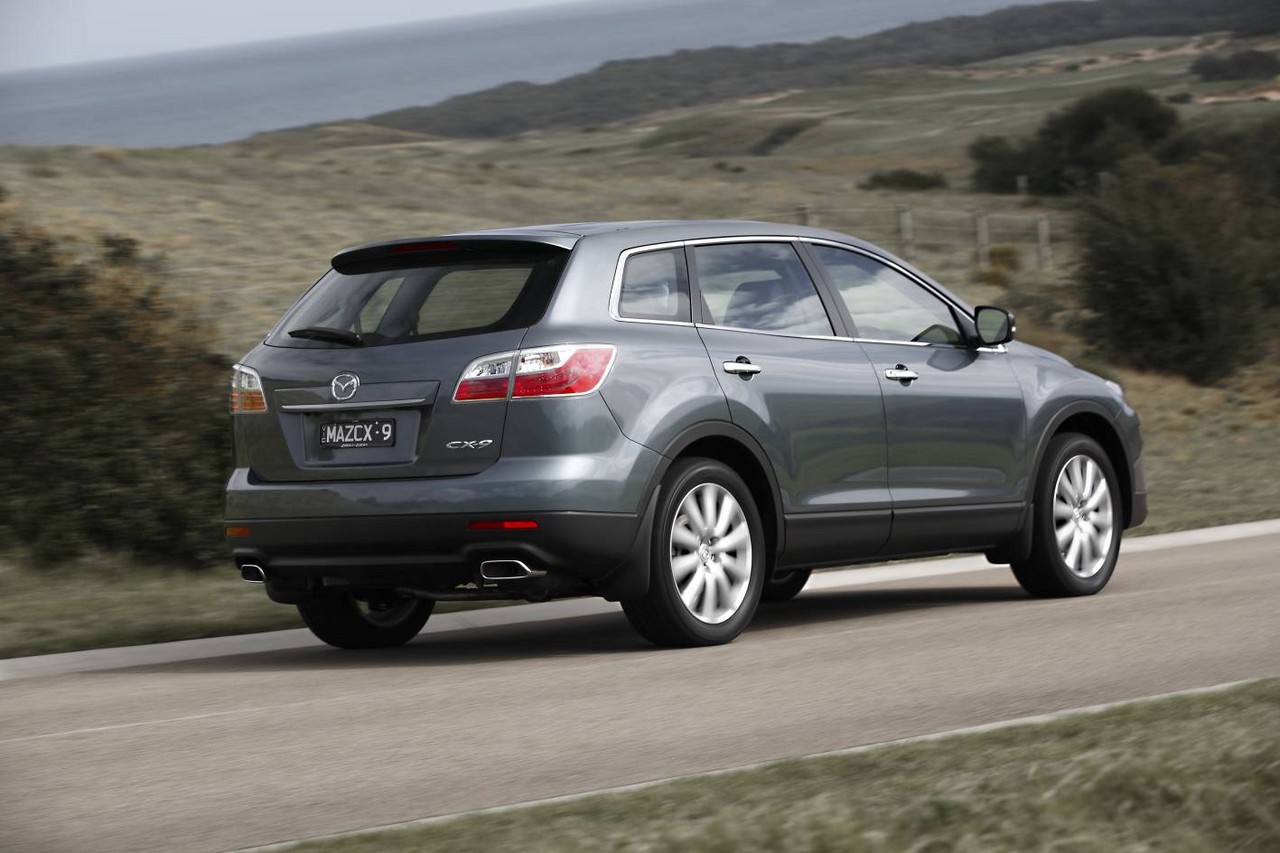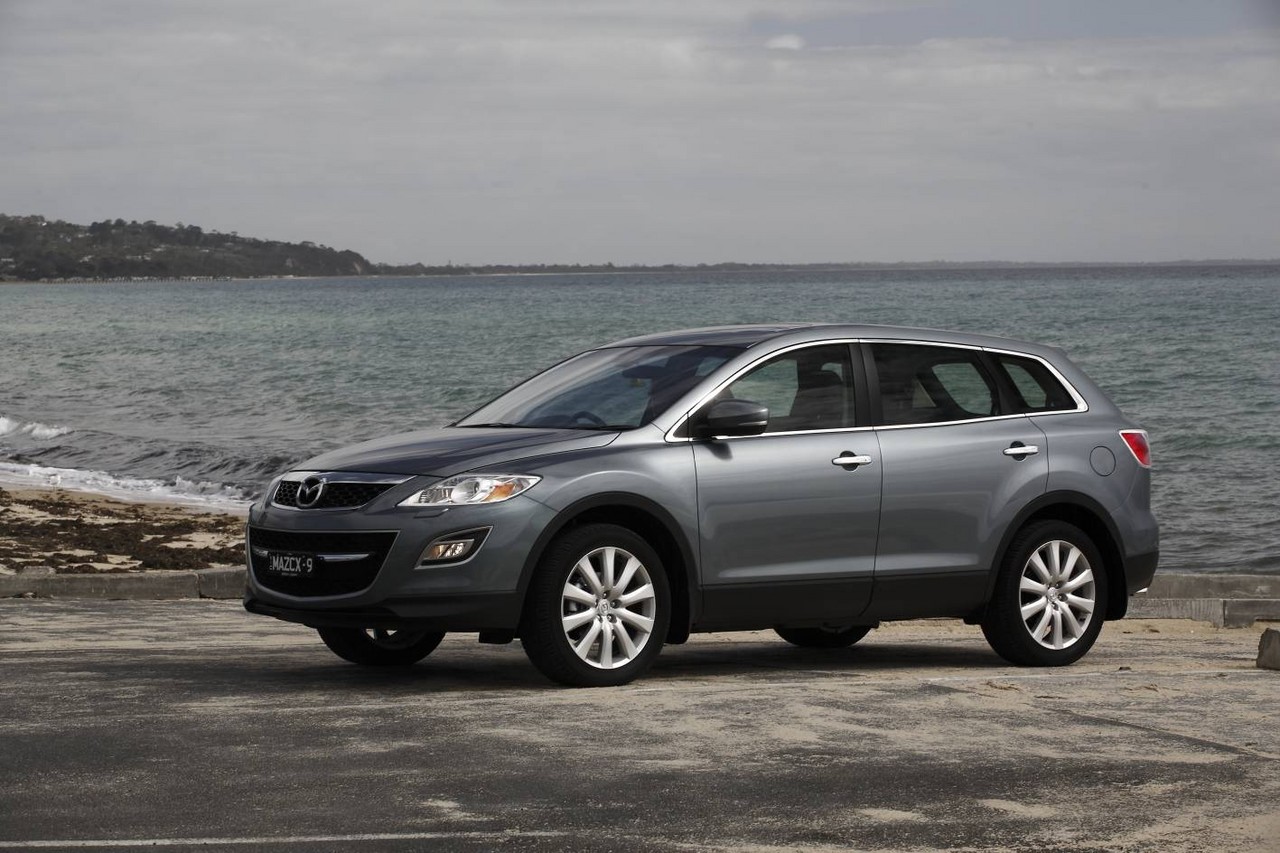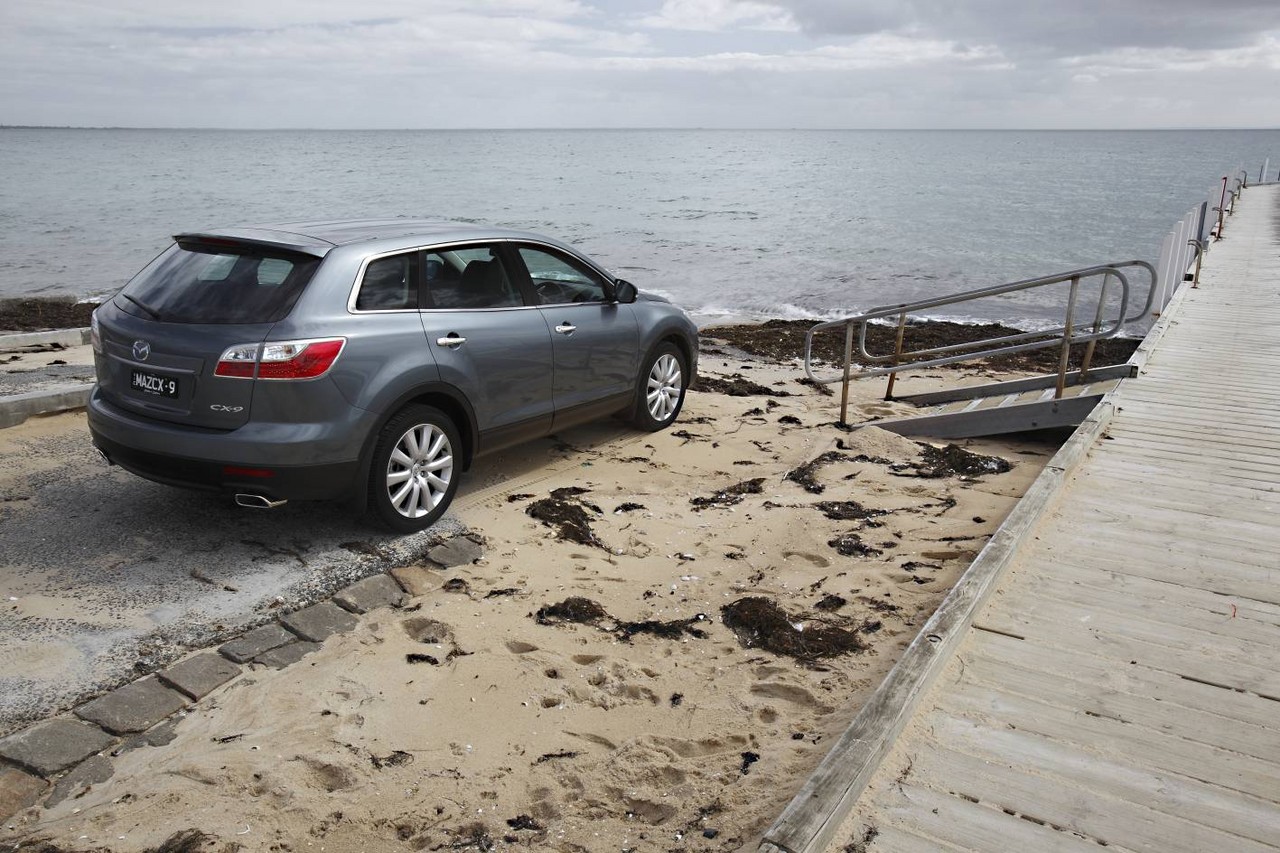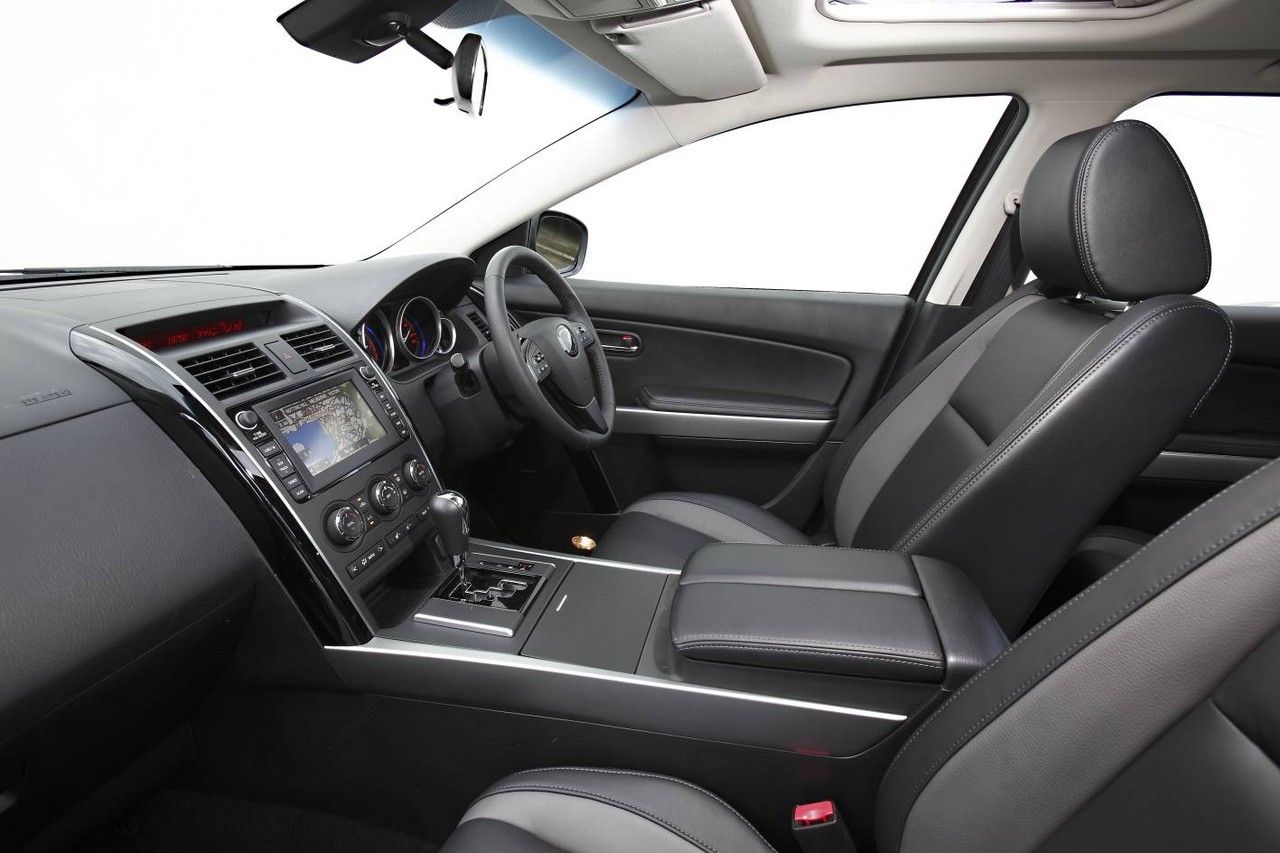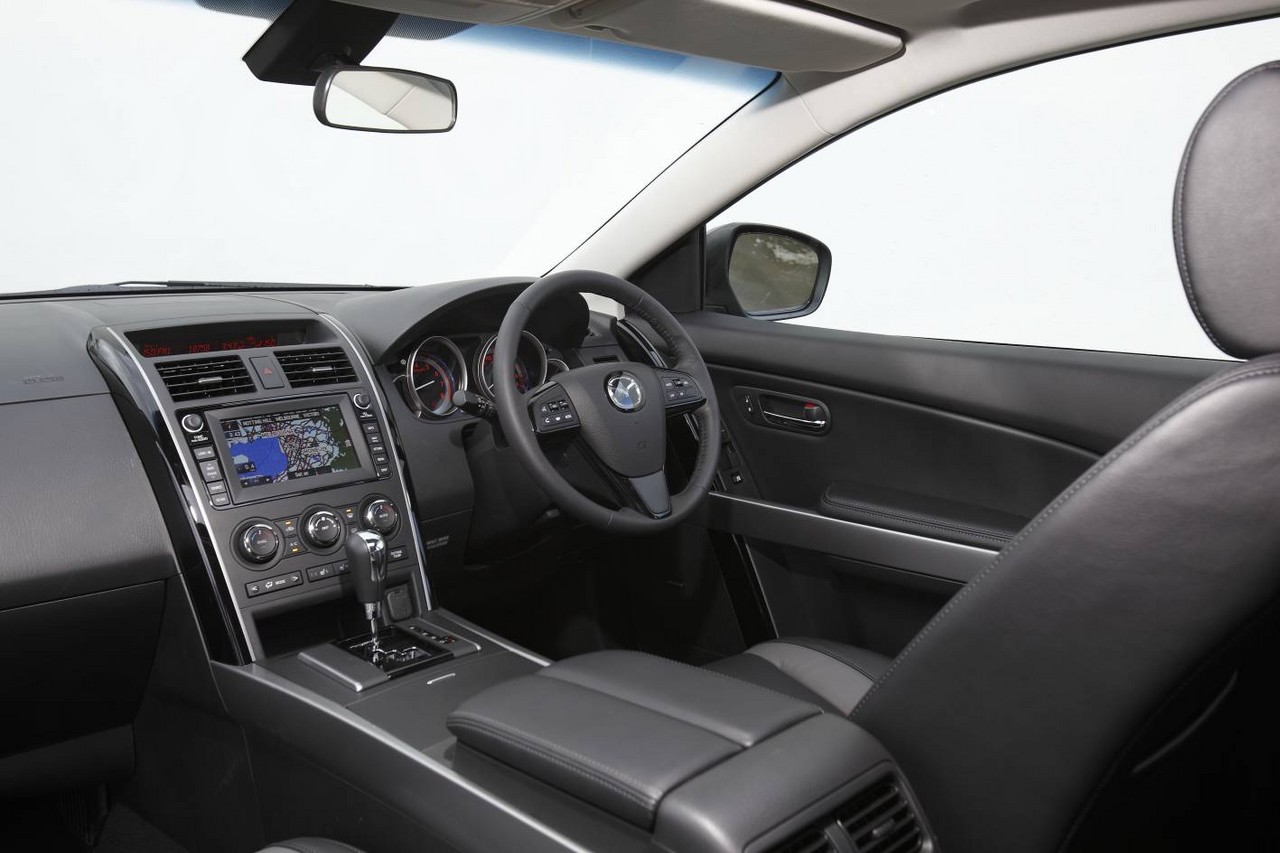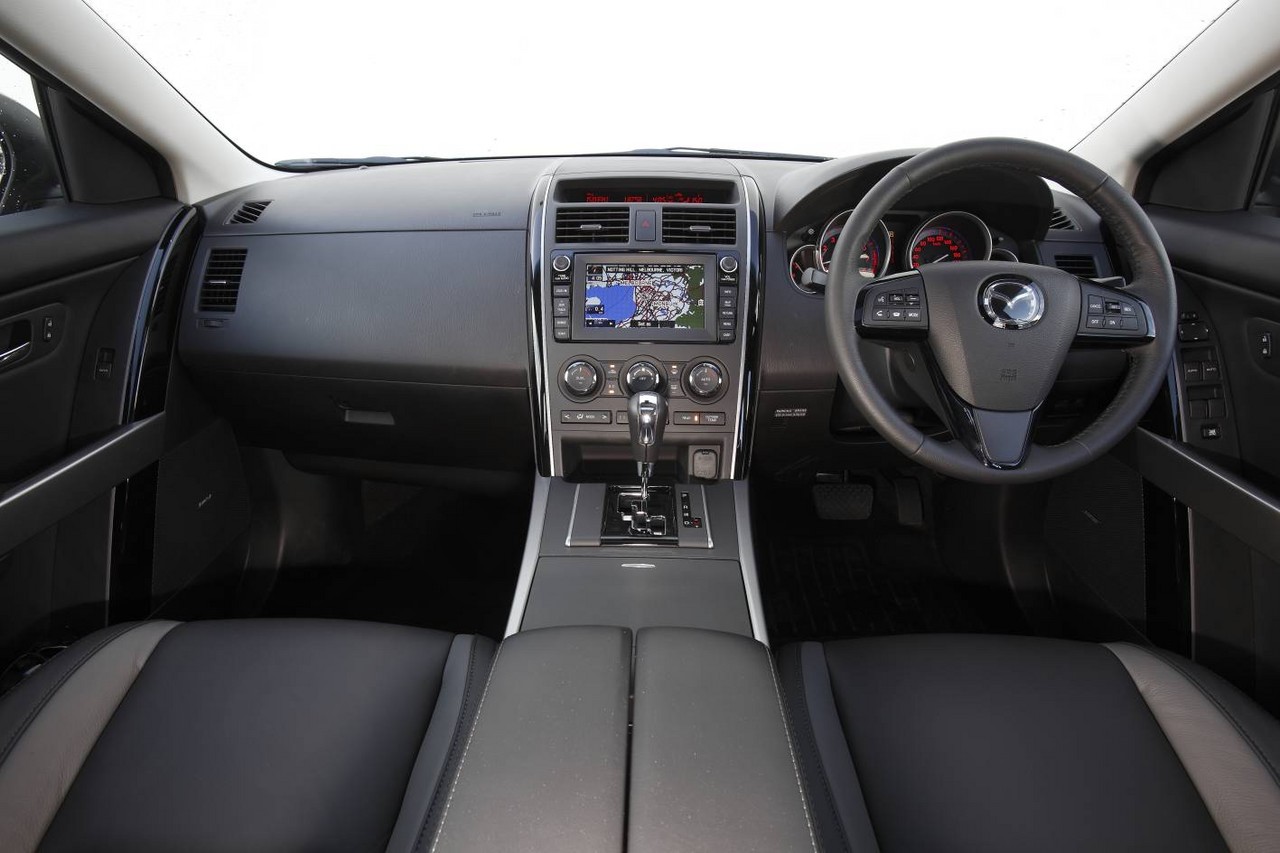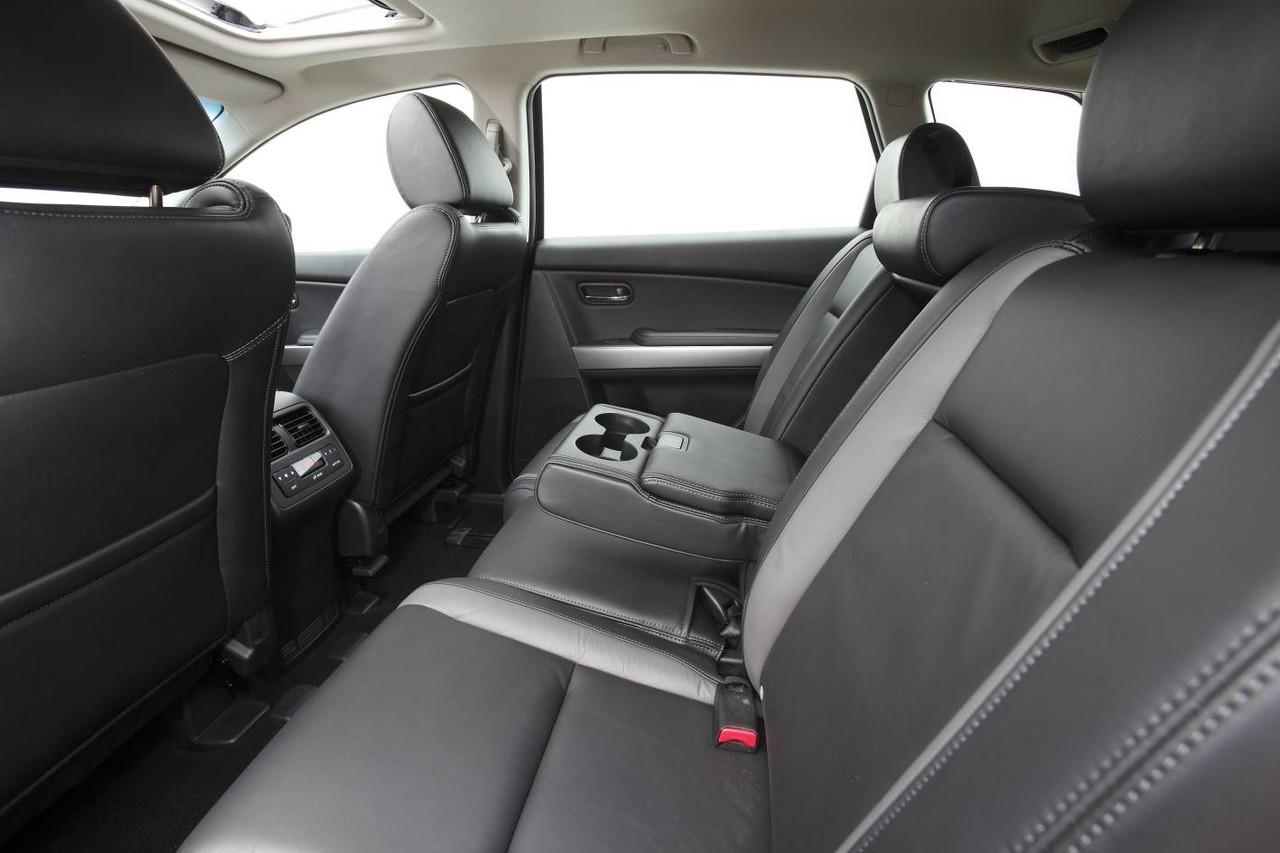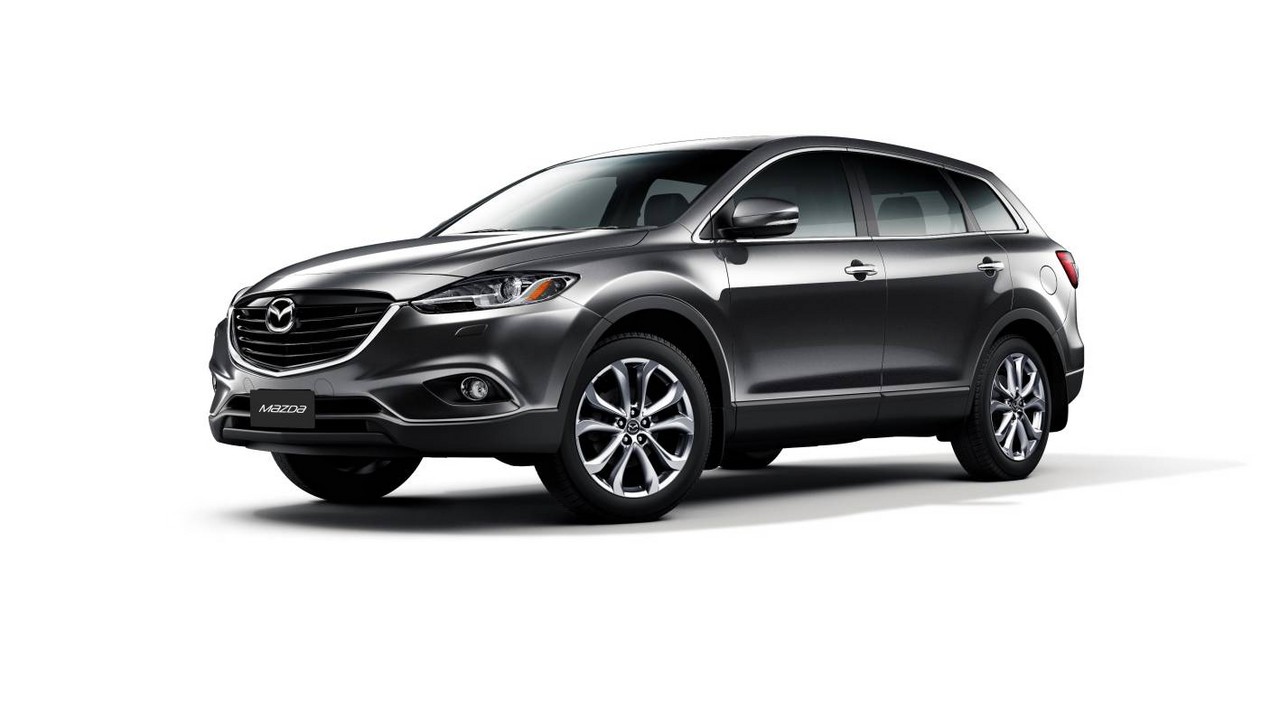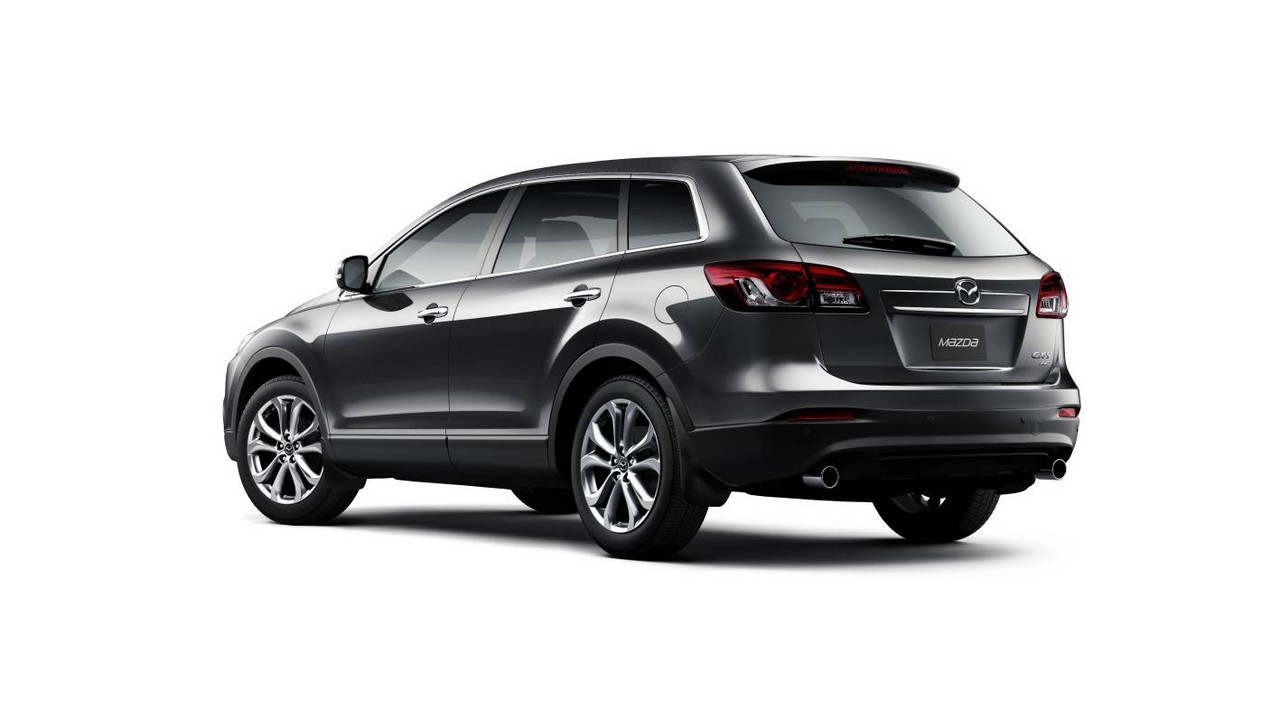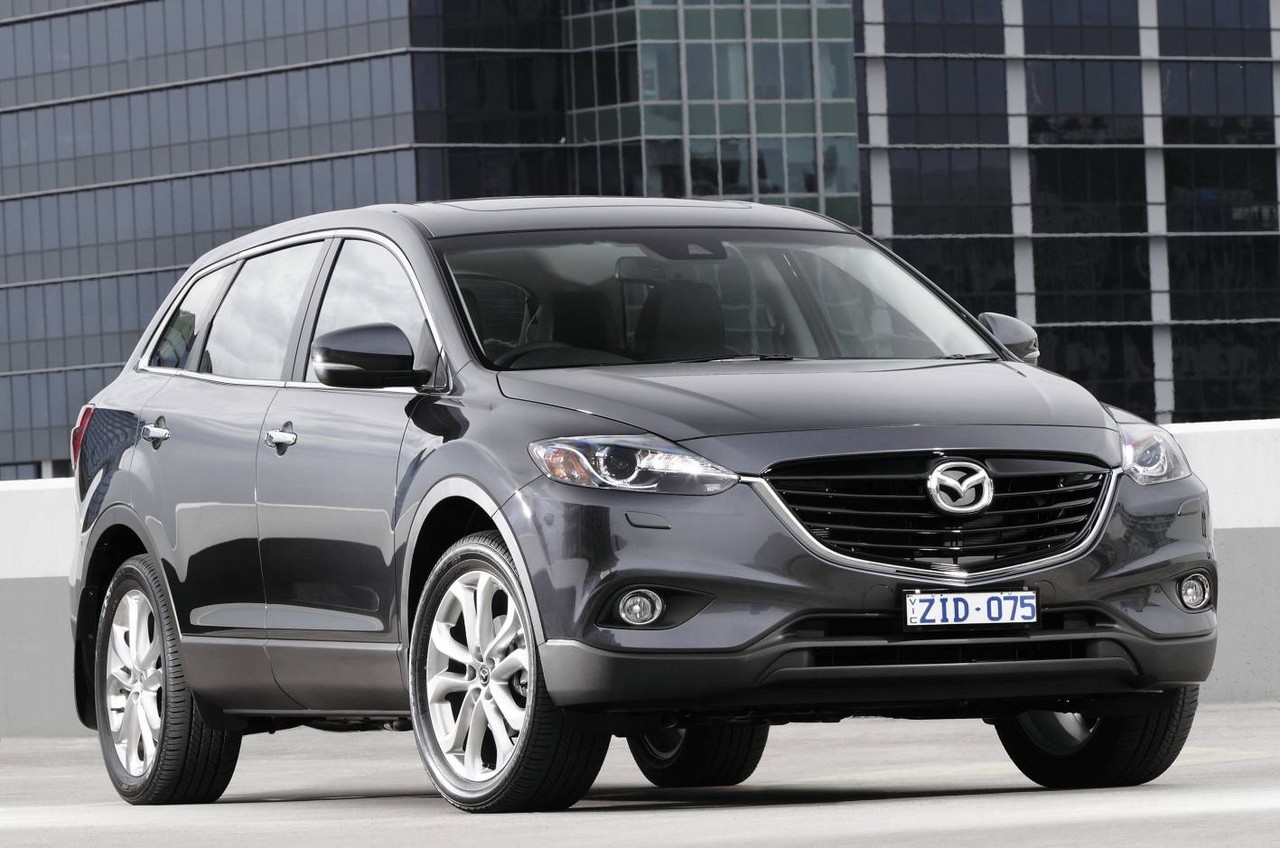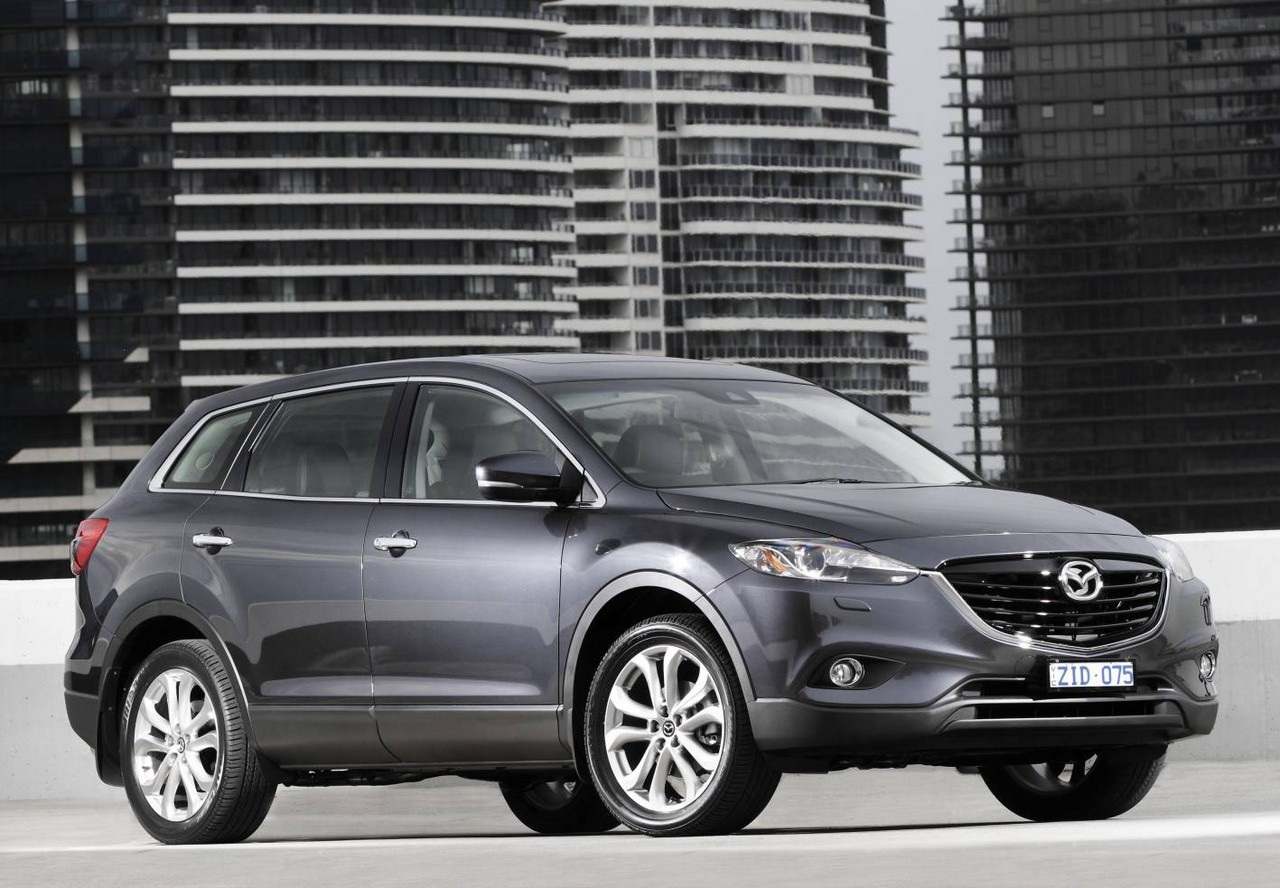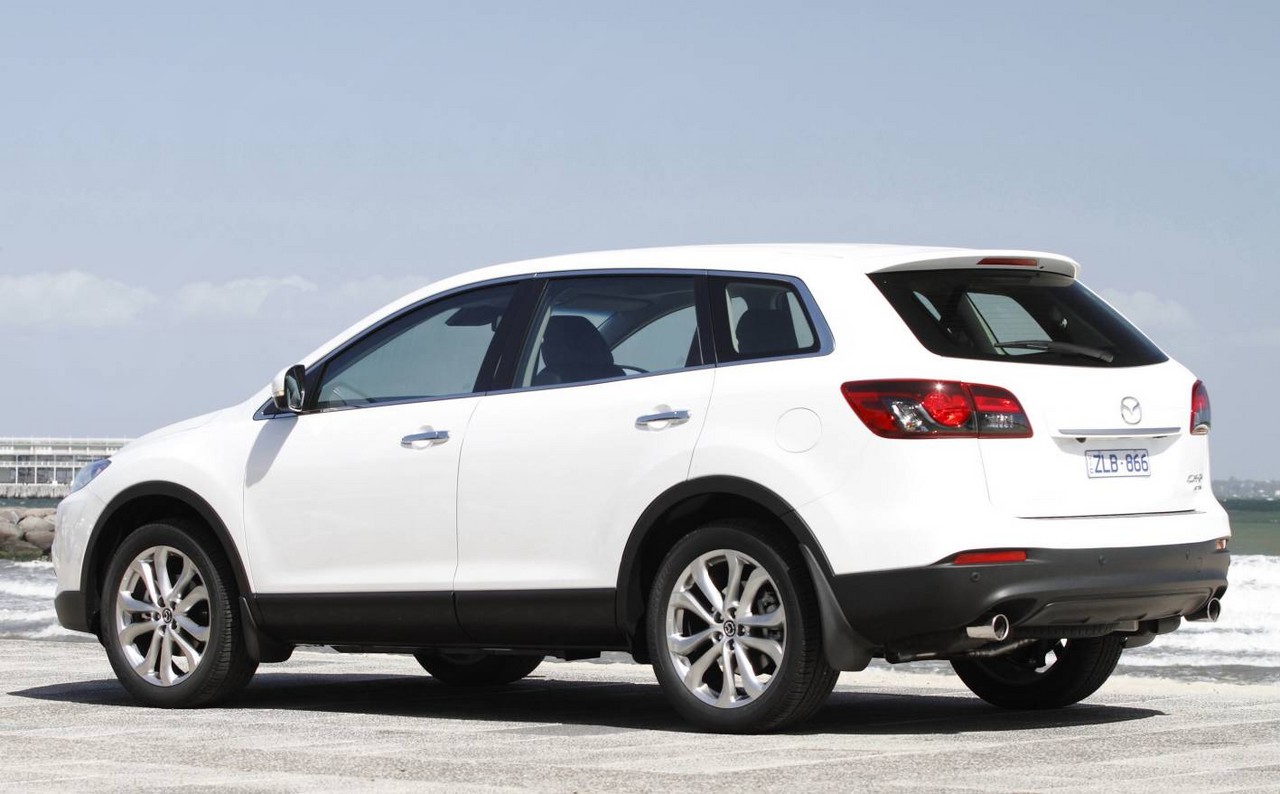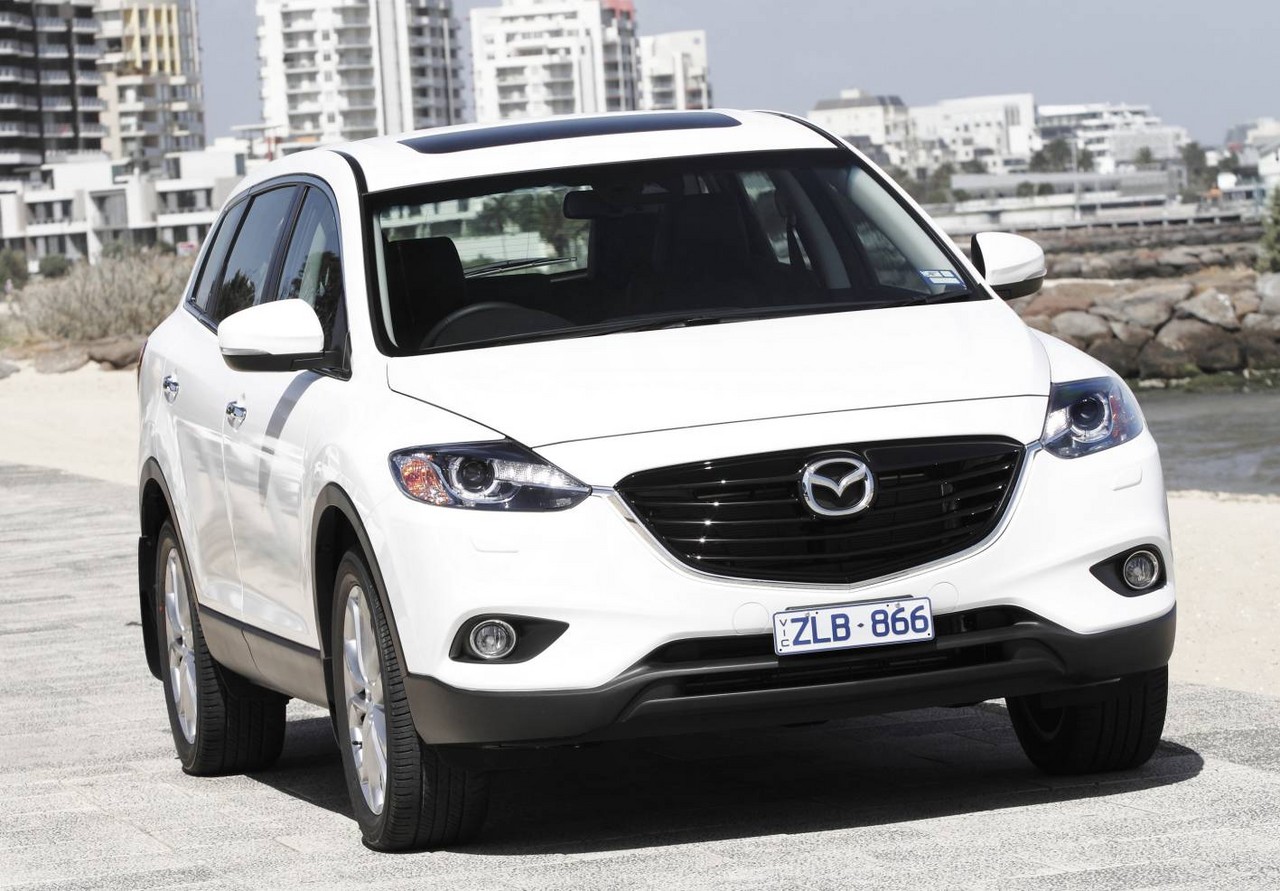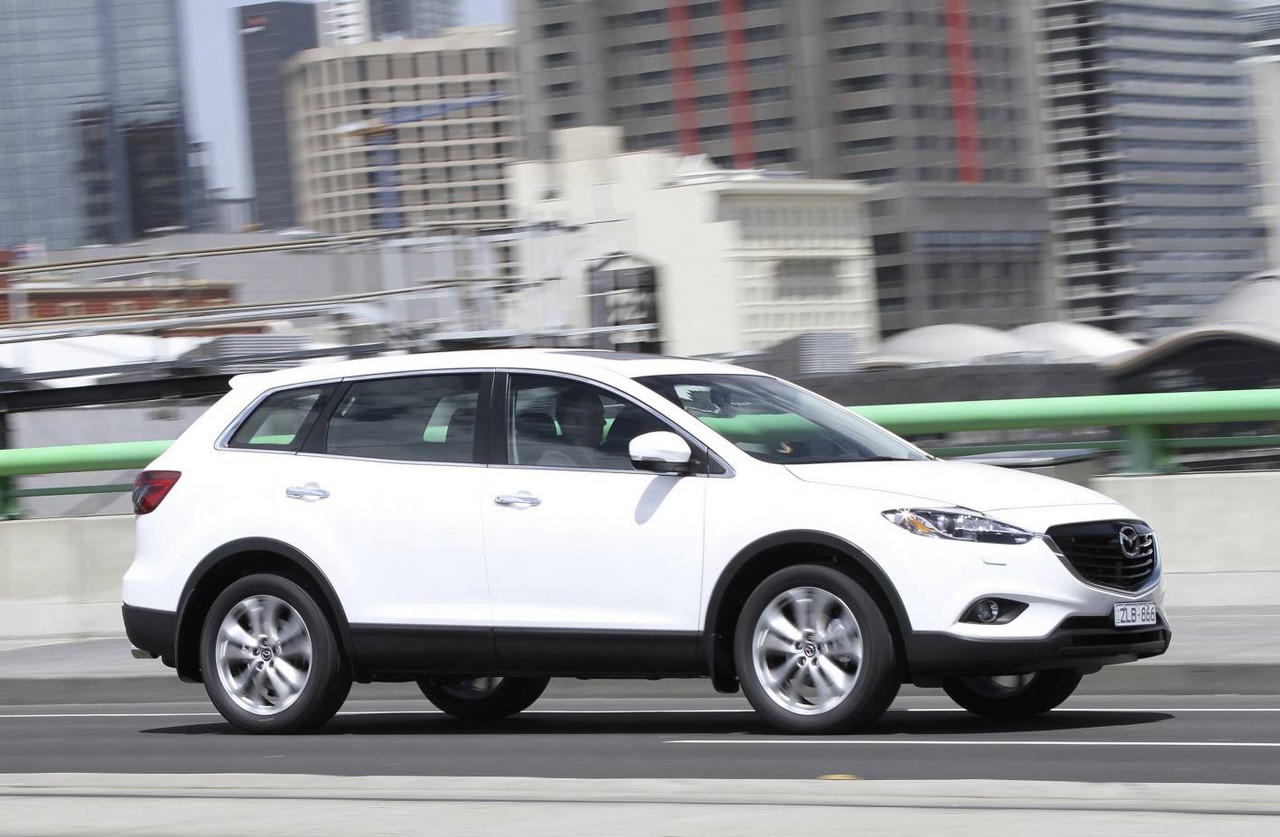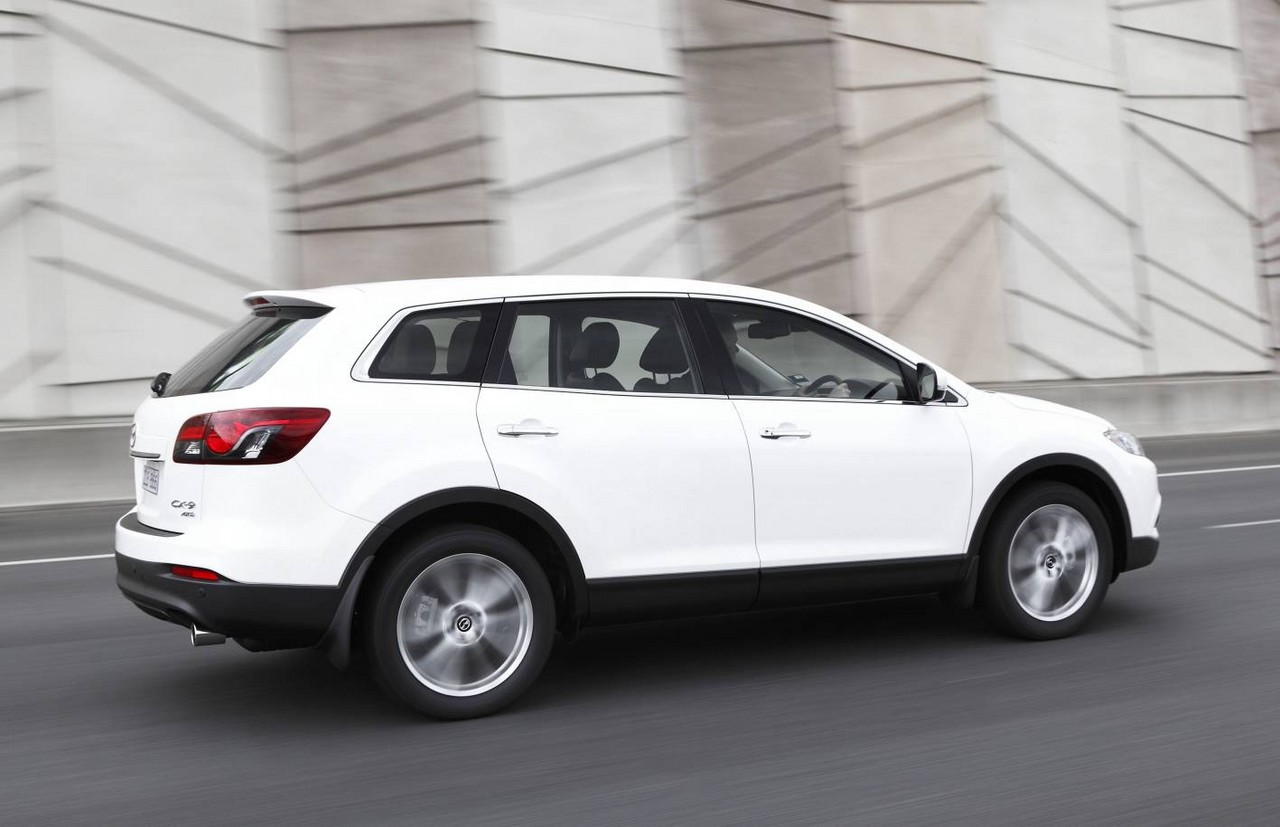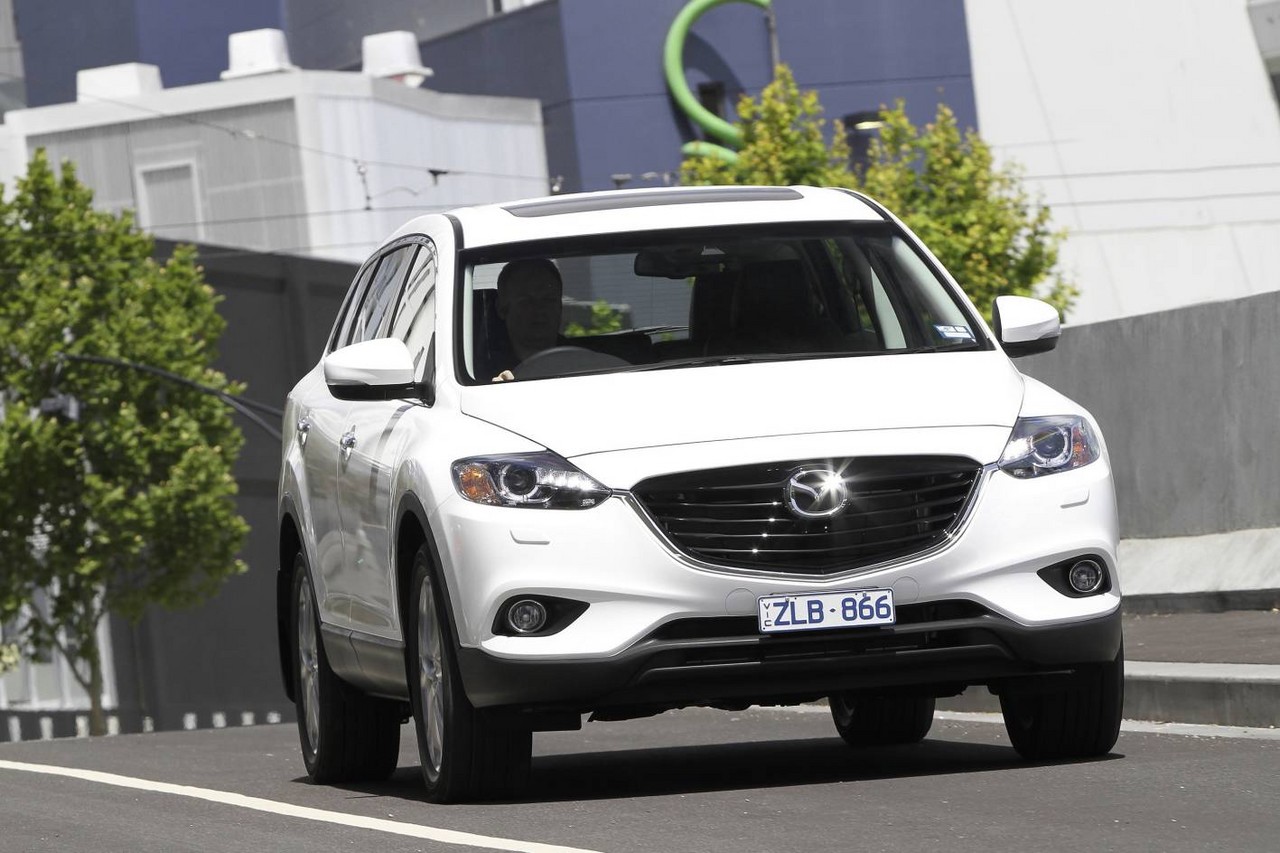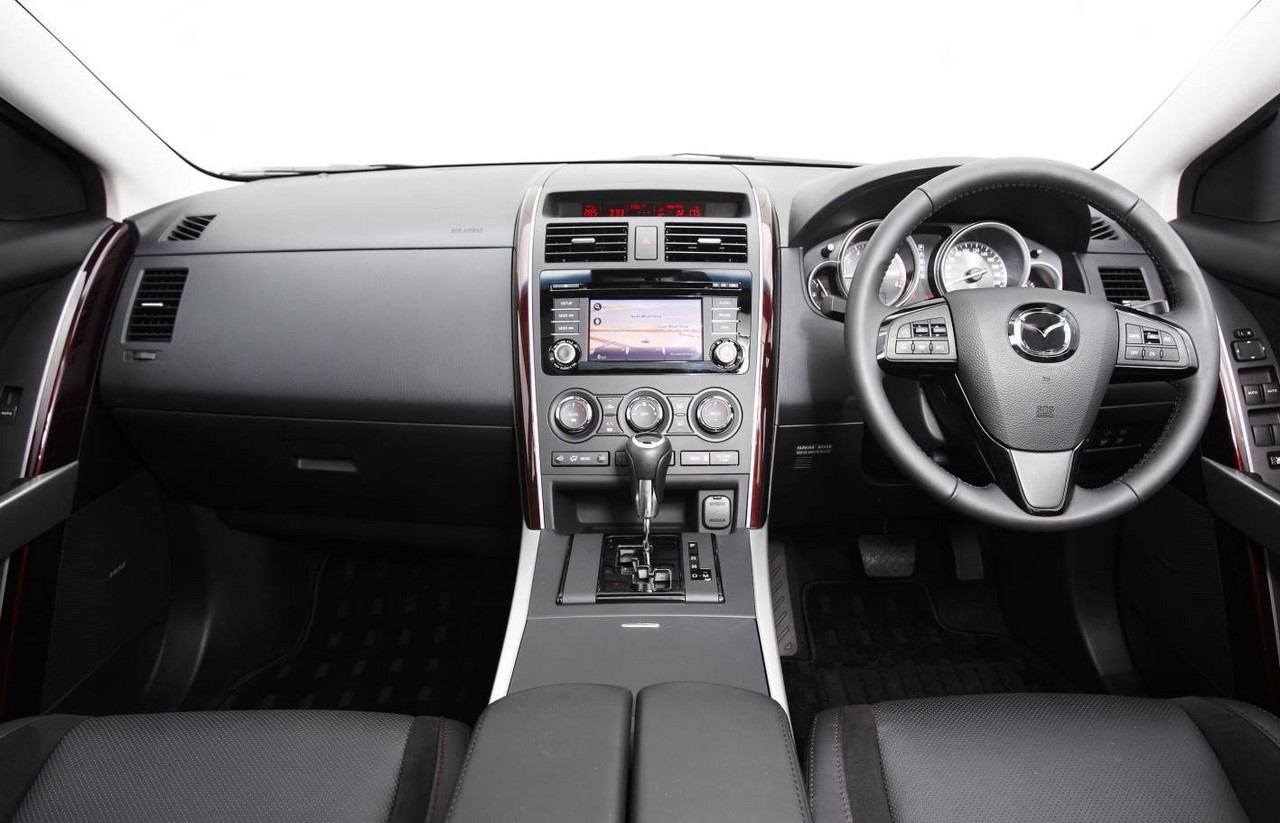
- Refined 3.7-litre V6 engine
- Competent dynamics
- Spacious interior, including third row seats
- Well-weighted steering provides good feedback
- Suspension lacks compliance, especially with 20-inch wheels
- 3.7-litre V6 petrol engine thirstier than rivals
- Reports of brake booster diaphragm tears for CX-9 vehicles produced prior to April 2013
- Reports of front suspension ball joint failure for 2007-2013 CX-9 vehicles due to corrosion from water leaking into the fitting
Review: Mazda TB.I CX-9 (2007-09)
Overview
Released in December 2007, the Mazda TB Series I (TB.I) CX-9 was a large, seven-seat SUV. Manufactured in Hiroshima, Japan, the Mazda CX-9 was powered by a 3.7-litre petrol V6 engine that was mated to a six-speed automatic transmission. The TB.I CX-9 was solely available with all-wheel drive, while the range consisted of Classic and Luxury variants.
V6 Engine
The 3.7-litre ‘MZI’ V6 petrol engine had an aluminium alloy cylinder block and head, double overhead camshafts with direct-acting mechanical bucket (DAMB) tappets, twin independent variable cam timing (i.e. variable for intake and exhaust camshafts) and a compression ratio of 10.3:1. The six-speed F21 automatic transmission was manufactured by Aisin.
Dimensions and suspension
Underpinned by Ford’s CD3 platform, the CX-9 was 5074 mm long, 1936 mm wide, 1728 mm tall and had a 2875 mm long wheelbase. Furthermore, the CX-9 had MacPherson strut front suspension and independent, multi-link rear suspension (both with coil springs, gas-filled dampers and anti-roll bars).
| Variant | Drive | Engine | Trans. | Peak power | Peak torque |
|---|---|---|---|---|---|
| Classic, Luxury |
AWD | 3.7-litre petrol V6 | 6sp auto | 204 kW at 6250 rpm | 366 Nm at 4250 rpm |
AWD system
Like the CX-7 , all models within the TB.I CX-9 range were fitted with Mazda’s ‘Active Torque-Split’ all-wheel drive system. In normal conditions, the system sent all power to the front wheels for maximum fuel economy. In the event that the front wheels began to lose traction, however, two computer-controlled magnetic clutches – housed within the rear differential – would engage to direct up to 50 per cent of the engine’s torque to the rear axle (i.e. a 50:50 front:rear torque split).
Safety equipment
Standard safety equipment for the CX-9 included dual front airbags, front side airbags, full-length curtain airbags (i.e. for front, second and third row occupants), ABS, electronic brake force distribution, brake assist, electronic stability control, traction control and front seatbelts with pretensioners and load limiters. The CX-9 was also fitted with a rollover sensor which could pre-emptively inflate the side and curtain airbags to protect occupants.
Features
Standard features for the CX-9 Classic included 18-inch alloy wheels, a six speaker sound system with six-stack CD player, MP3-compatibility and auxiliary inputs, three-zone climate control air conditioning, a 7.5-inch touch-screen display, cruise control, front fog lamps, rain sensing wipers, automatic headlights, reversing camera, a leather-wrapped steering wheel and gearshift lever, remote central locking, power mirrors and windows, tilt and telescopic steering wheel adjustment, a height adjustable driver’s seat with lumbar adjustment, 12 volt power outlet, tinted windows, trip computer and an immobiliser. Inside, the CX-7 was fitted with split and folding second and third row seats; the third row could also fold flat into the floor.
The CX-9 Luxury was further equipped with 20-inch alloy wheels, a ten speaker Bose sound system, leather seats, an eight-way power adjustable driver’s seat (with memory settings) and four-way power adjustable front passenger seat, heated front seats, heated mirrors, a power sunroof, blue ambient lighting and chrome highlights.
Related links
Review: Mazda TB.II CX-9 (2009-12)
Overview
Released in October 2009, the TB Series II (TB.II) CX-9 introduced a revised range, with the range consisting of Classic, Luxury and Grand Touring variants. Furthermore, the suspension was softened and other modifications contributed to improved fuel economy. Visually, the TB.II CX-9 could be identified by its larger five-point grille, revised front and rear combination lamps, and front and rear silver garnishes. Inside, the TB.II CX-9 was fitted with a 4.3-inch colour LCD screen, new cloth and leather trim, chrome and Piano Black plating and double-opening centre console storage area.
In October 2010, the CX-9 underwent a minor update with engine modifications, lighter alloy wheels and low resistance tyres providing improved fuel consumption. In June 2011, front-wheel drive Classic and Luxury variants were introduced and the all-wheel drive Classic was discontinued.
| Variant | Drive | Years | Engine | Trans. | Peak power | Peak torque |
|---|---|---|---|---|---|---|
| Classic | AWD | 2009-11 | 3.7-litre petrol V6 | 6sp auto | 204 kW at 6250 rpm | 366 Nm at 4250 rpm |
| FWD | 2011-12 | |||||
| Luxury | AWD | 2009-12 | ||||
| FWD | 2011-12 | |||||
| Grand Touring | AWD | 2009-12 |
Features
Standard features for the CX-9 Classic were substantially the same. The Luxury variant was fitted with automatically dipping door mirrors for reversing and memory settings for side mirrors (three positions). However, an integrated satellite navigation system with a seven-inch touchscreen, Bluetooth connectivity and audio streaming was optional for both the Classic and Luxury variants.
The range-topping CX-9 Grand Tourer was fitted with the integrated satellite navigation system, a single CD player, xenon headlights with washers, keyless start and power tailgate.
Related links
Review: Mazda TB.III CX-9 (2012-15)
Overview
Released in December 2012, the TB Series III (TB.III) CX-9 introduced a subtle facelift, additional features and Mazda’s ‘i-ACTIVSENSE’ safety technologies for the range-topping Grand Touring variant.
Visually, the TB.III CX-9 could be identified by its ‘Kodo’ design theme which included a new front grille, rear combination lights and chrome-plated bezels for the front fog lights; Grand Touring variants were also fitted with daytime LED running lights. Inside, the CX-9 was fitted with upgraded infotainment systems, a black instrument panel (with satin-silver trim), ‘Bordeaux’ coloured decoration panels and satin-silver trim for the interior door handles.
| Variant | Drive | Years | Engine | Trans. | Peak power | Peak torque |
|---|---|---|---|---|---|---|
| Classic | FWD | 2012-15 | 3.7-litre petrol V6 | 6sp auto | 204 kW at 6250 rpm | 366 Nm at 4250 rpm |
| Luxury | FWD, AWD |
2012-15 | ||||
| Grand Touring | AWD | 2012-15 |
Safety equipment
For Grand Touring variants, standard safety equipment was extended to include Mazda’s i-ACTIVSENSE technologies:
- Blind Spot Monitoring (BSM) operated at speeds in excess of 30 km/h and detected vehicles approaching from behind or in the driver’s blind spot (on either side of the vehicle). The system could also warn the driver of a vehicle in the driver’s blind spot when the indicator was activated (Rear Cross Traffic Alert);
- Forward Obstruction Warning (FOW) alerted the driver when the vehicle was too close to the vehicle ahead and at risk of a collision; and,
- Lane Departure Warning System (LDWS) used a camera to detect lane markings and warn the driver of unintentional lane departures when travelling at speeds of 65 km/h or above.
From September 2013, the Grand Touring was also fitted with Rear Cross Traffic Alert (RCTA) which would sound an alarm to warn the driver of oncoming traffic when reversing from a parking space.
Features
Standard features for the TB.III CX-9 were extended to include a USB input and Bluetooth mobile phone connectivity and audio streaming; Luxury variants were further equipped with a TomTom satellite navigation system.
The CX-9 Grand Touring gained rear parking sensors and the xenon headlights included a ‘High Beam Control’ function which automatically switched the headlights between low- and high-beam as required when oncoming vehicles were detected.
In September 2013, new alloy wheel designs were introduced for all variants including a silver finish for the 18-inch alloys on Classic variants.
Brochure
Related links
- Press Kit: Mazda TB.III CX-9 (December 2012)
- Specifications: Mazda TB.III CX-9 (December 2012)
- Mazda News: Mazda CX-9 gets new colours and wheels, GT adds safety technology (September 2013)
- Mazda Australia: Mazda CX-9
- Wikipedia.org: Mazda TB CX-9


